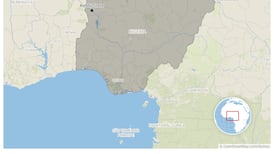The UN has called for an urgent increase in aid and assistance for Somalia, where millions of people are going hungry amid a devastating drought related to climate change, even as officials have stopped short of the expected declaration of famine.
Holding a press conference from capital city Mogadishu, Martin Griffiths, the UN’s emergency relief coordinator, said this is “the last minute of the eleventh hour to save lives. The clock is running and it’ll soon run out”.
He said 1.5 million children face severe acute malnutrition by October if there isn’t an adequate response. Currently, 213,000 Somalis are experiencing “famine-like conditions”.
A famine declaration is helpful when it comes to raising funding to provide assistance, but various specific requirements need to be met, and this data can be difficult to gather. The conditions include that 20 per cent of households in an area must face extreme lack of food; 30 per cent of children under five must be suffering from acute malnutrition; and two adults or four children for every 10,000 of the population must be dying each day.
READ MORE
While Mr Griffiths said that may be already happening in parts of the country, the data is not there to prove it. A further review will take place next month, he said.
Despite this, the situation is “urgent”. Mr Griffiths reflected on visiting a treatment centre for malnourished children, saying none of the children he saw “could smile” and “very few could cry.”
“When a child cries there is a chance of survival. Children who don’t cry are the ones we need to worry about.”
In April, The Irish Times visited camps for people displaced by drought in Somalia. Several recent arrivals said their family members had died on the way there, but those deaths had not been recorded.
Islamic militant group Al Shabaab continues to control large swathes of territory, complicating the distribution of aid. The country was also mired in a lengthy political crisis which ended earlier this year, with the election of a new government and president.
Mr Griffiths underlined that while the drought is related to climate change, Somalia produces very low emissions compared to the richer parts of the world. “This is a punishment that the people in this country do not deserve,” he said. Referring to the floods in Pakistan, he said he “thought that this year [the international community] would focus on climate change as a driver of humanitarian need,” but the war in Ukraine has been diverting attention.
Mr Griffiths specifically said that more funding is needed for Somali organisations: “The first responders ... who take the risks, do the deliveries.” In the longer term, he said, Somali authorities are keen for investment to bolster their resilience against climate change.
Neighbouring Kenya and Ethiopia are also affected by the drought. In Kenya, 4.1 million people are said to be experiencing crisis levels of food insecurity, while nearly one million children under the age of five are thought to be acutely malnourished.
Irish Minister of State for Overseas Development Aid, Colm Brophy visited Turkana, northern Kenya, last week. In a video posted on Twitter he said there is a “risk of famine” and an “urgent need for the international community to intervene and make additional funds available”.
In Ethiopia’s south and southeast, about 3.4 million livestock had died by early June, according to the government.
A famine in Somalia in 2011 resulted in about a quarter of a million deaths. At the time, many observers complained that the famine declaration came too late.













